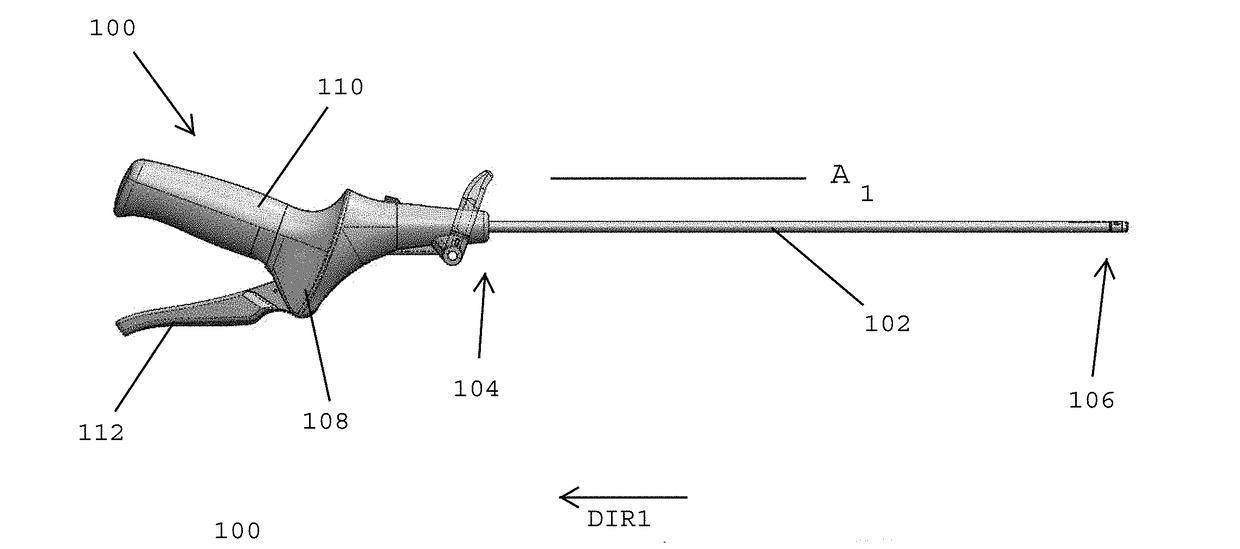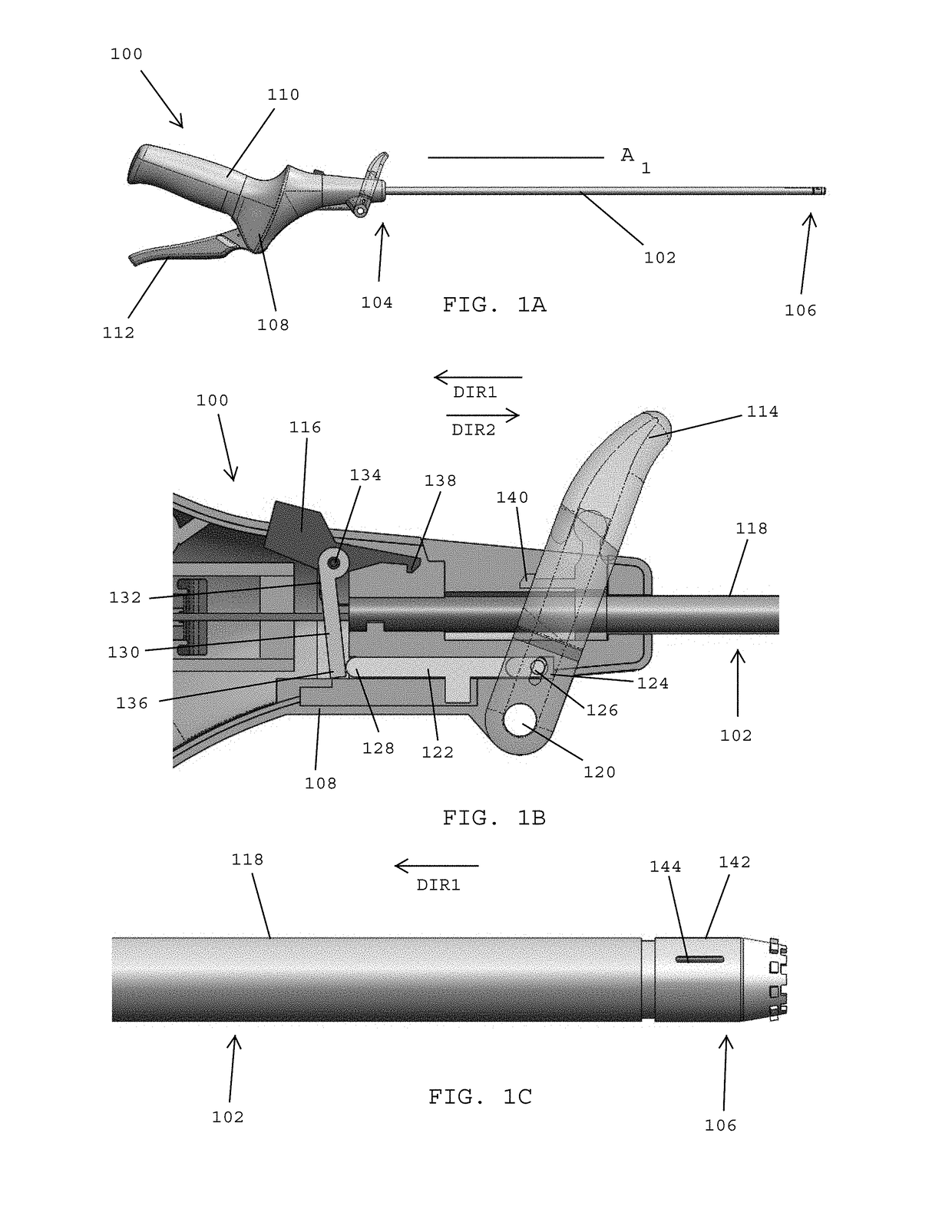Applicator instruments for dispensing surgical fasteners having articulating shafts
a technology of surgical fasteners and articulating shafts, applied in the field of application instruments, can solve the problems of reducing lifting abilities, affecting the rigidity of the articulated configuration, and affecting the ability of surgeons to perform surgery, so as to simplify the complexity and user experience of the device, improve the rigidity of the articulated configuration, and improve the effect of lifting ability
- Summary
- Abstract
- Description
- Claims
- Application Information
AI Technical Summary
Benefits of technology
Problems solved by technology
Method used
Image
Examples
Embodiment Construction
[0069]Referring to FIG. 1, in one embodiment, an applicator instrument 100 for dispensing surgical fasteners preferably includes an elongated shaft 102 having a proximal end 104, a distal end 106, and an elongated axis A1 that extends between the proximal and distal ends 104, 106. In one embodiment, the applicator instrument 100 includes a handle 108 secured to the proximal end 104 of the elongated shaft 102. The handle 108 desirably has a hand grip 110 and a trigger 112 that may be squeezed to commence a firing cycle for dispensing a surgical fastener from the distal end 106 of the elongated shaft 102. In one embodiment, the trigger may be replaced by an actuator that commences a firing cycle for dispensing a surgical fastener.
[0070]Referring to FIGS. 1A and 1B, in one embodiment, the applicator instrument 100 includes an actuator such as an articulation lever 114 that is coupled with the elongated shaft 102 for articulating a distal end of the instrument as will be described in mo...
PUM
 Login to View More
Login to View More Abstract
Description
Claims
Application Information
 Login to View More
Login to View More - R&D
- Intellectual Property
- Life Sciences
- Materials
- Tech Scout
- Unparalleled Data Quality
- Higher Quality Content
- 60% Fewer Hallucinations
Browse by: Latest US Patents, China's latest patents, Technical Efficacy Thesaurus, Application Domain, Technology Topic, Popular Technical Reports.
© 2025 PatSnap. All rights reserved.Legal|Privacy policy|Modern Slavery Act Transparency Statement|Sitemap|About US| Contact US: help@patsnap.com



